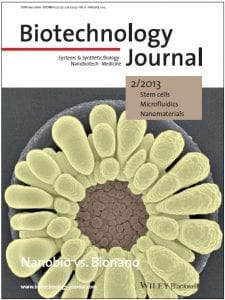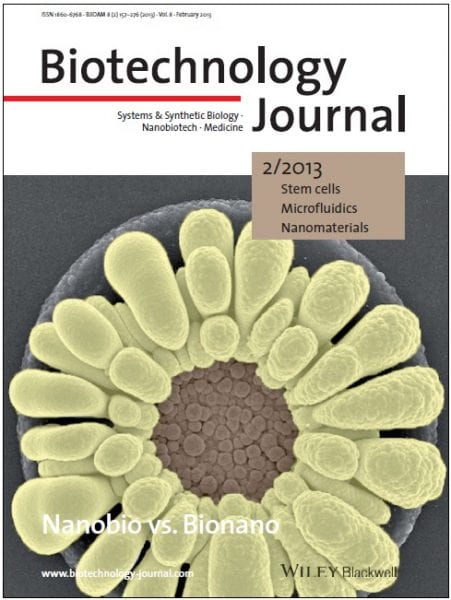 As an editor of a biotechnology journal, (incidentally, the title of my journal is Biotechnology Journal), I often encounter the seemingly interchangeable terms “nanobiotechnology” and “bionanotechnology”. So when Professor François Baneyx (University of Washington) suggested a special issue on “nanobio versus bionano” at our Editorial Board meeting in Seattle in 2011, we were more than enthusiastic to take on the challenge of exploring the similarities and differences of the two in an issue of the journal dedicated solely to this topic. To complement Prof. Baneyx’s expertise in bionanotechnology, we invited Professor Je-Kyun Park (KAIST) to serve as guest editor of the nanobiotechnology part of the special issue.
As an editor of a biotechnology journal, (incidentally, the title of my journal is Biotechnology Journal), I often encounter the seemingly interchangeable terms “nanobiotechnology” and “bionanotechnology”. So when Professor François Baneyx (University of Washington) suggested a special issue on “nanobio versus bionano” at our Editorial Board meeting in Seattle in 2011, we were more than enthusiastic to take on the challenge of exploring the similarities and differences of the two in an issue of the journal dedicated solely to this topic. To complement Prof. Baneyx’s expertise in bionanotechnology, we invited Professor Je-Kyun Park (KAIST) to serve as guest editor of the nanobiotechnology part of the special issue.
I am pleased to announce that Prof. Baneyx and Prof. Park’s efforts have come to fruition with the February 2013 publication of Biotechnology Journal’s special issue on “Nanobio versus Bionano”. In their editorial, Prof. Baneyx and Prof. Park offered their opinion on the status of “nanobio versus bionano”: while the special issue tackles the topic by bringing together research from the nanobio as well as the bionano perspectives, the focus here is not that the two are two ends of a spectrum, but rather, the convergence of nanobio & bionano as an interdisciplinary research area. More important than the terminology, is the results and implications of the studies that have been carried out under the banner of nanobiotechnology and bionanotechnology.
Progress in nanobiotechnology in the form of microfluidics has opened doors to our further understanding of stem cell and developmental biology. In addition to elucidating basic biological phenomena, nanobiotechnology has broad potential applications, including that in regenerative medicine.
“Bionanotechnology borrows inspiration from nature and aims at improving upon its already remarkable performance by allowing for the synthesis, physico-chemical modification, and assembly of novel materials, structures and systems with exquisite control over composition, geometry and function”, according to Prof. Baneyx and Prof. Park. The articles in this section of the special issue, including that from Professor Doug Clark’s paper on enhancing thermostability of biotemplates for the formation of metallic nanowires (see also the accompanying commentary by Professor Jonathan Dordick), provide excellent examples of such.
This special issue has helped me a great deal in understanding the two terms “nanobiotechnology” and “bionanotechnology” – I hope that it will also be of help to our readers!

















